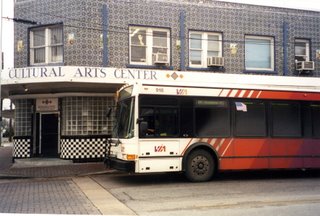
By Bárbara Renaud González
Wordcount: 2903 total in a three part investigative story
If you’ve ever been to
The
But hueso means bone, and to the rest of us living with the memories of our grandparents who courted, married, worked menial jobs, dreaming of a better life for their children, the
And what a home that is. The greasy smell of ache, the wonder of abuelita’s tamales slipping onto the dime-store plate after school, the minted poetry of las hierbitas growing in a coffee can, and the scratchy guitars of rancheras our parents played late into the night, whispering how they would send us to college.
In 1979, twenty-seven years ago, the
In the nineties, the Guadalupe’s funding increased, averaging about a million and a half dollars yearly from city allocations, corporations and foundation support. It received about $450,000 for FY 2006, says Felix Padrón, the Director of the Office of Cultural Affairs, situating the
The Guadalupe, though, is the only arts and cultural institution situated in the barrio.
It was in this post-Reagan period when the Guadalupe began to get lost, some say, dancing at the edge of an easy and mediocre play to suit corporate donors, stumbling badly on real estate purchases, believing that the house would always be there even if we don’t live in it anymore. Someone should – and will – write a better novel, compose the opera, that I can’t detail in this vida loca story.
And then R. Bret Ruiz arrived. His given name is René Bret Ruiz, but according to former staffmembers, he legally changed his name to the initial R. An MBA with a Yale degree, the Guadalupe Board of Directors hired the guero latino with the cookie-cut blue suit last July after a two-year national search. Prior to the Guadalupe, Ruiz had been Executive Director of the Anita N. Martinez Ballet Folklorico in
Ruiz, the new president with all-Anglo references on his employment application, was the culmination of everything the Guadalupe had become according to many: corporate, mainstream, the non-accented lower-case latino without the dirtiness of a Chicano past. Ruiz lives on the edge of one of San Antonio’s most exclusive neighborhood, Olmos Park, and he loves shopping and eating, according to former staffmembers, in the pricey La Cantera in the far north of San Antonio and our Gucci HEB supermarket, the one with twelve kinds of goat cheese and lemon-scented toilet paper.
But his arrival in
In a story about R. Bret Ruiz published in the San Antonio Current on February 8, 2006, Ruiz answered the staff turmoil and critics by suggesting that the present staff didn’t want to see change at the Guadalupe. But the staffmembers tell me they expected change, they were looking forward to it, change for the better, from where they were. They were looking for a five-year plan, someone to lead, and it didn’t happen. He shut things down. People were totally lost, with no one to turn to for answers, decisions, nothing.
Rumors, chisme caliente, says that the Guadalupe’s city funds are about to be frozen, and that the City Council is on the verge of taking it over. Padrón, while not admitting to anything, explained that his office is not in the business of denying monies to an organization, and that any big decision of that nature would be determined on September 30th, 2006, at the end of this year’s funding cycle.
There is historic precedent, he said, reminding me that the City took over the San Antonio Symphony a few years ago when they went bankrupt. They now have a new president and a contractual obligation to offer free concerts in the community.
Alright, then. What about moral bankruptcy?

Comments